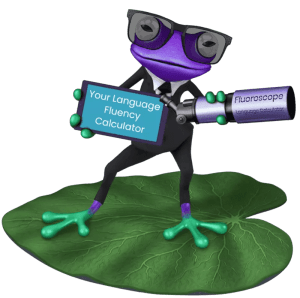Common Business English Phrases for Virtual, Hybrid, and Face-to-Face Meetings

Business meetings are a vital part of the corporate culture. It serves as an avenue for solving critical discussions, forming actions, providing feedback, and exchanging ideas. As business English learners, it would be prudent for you to learn common phrases during business meetings and put them into practice for future scenarios you may encounter.
There are two types of business meetings: formal and informal. Formal meetings follow a strict agenda and protocols, like requiring a quorum to proceed and make decisions on business matters. Board meetings, quarterly meetings, and management meetings are examples of formal meetings.
On the other hand, informal meetings have flexible protocols and a more open agenda —participants can raise topics they deem necessary. Compared to the latter, informal meetings are more collaborative and relaxed, wherein participants can speak less formally. Informal meetings include brainstorming, getting feedback, and creative planning sessions.
Both meetings require a prior invitation, a meeting leader or chairperson, and a secretary or notetaker. Participants of face-to-face business meetings attend in person and sit around in a common area (e.g., a conference table in the company building). Virtual meeting participants are usually not in the office setting. They are in different places connected in a video conference program. Lastly, a hybrid meeting is a combination of face-to-face and virtual meetings. There are attendees present in the office while others are attending virtually.
In this blog, you will learn about common business English phrases used in business meetings and improve your English language structure as you practice speaking with the guide of the various expressions enumerated below.
Planning a Meeting
“If you fail to plan, you plan to fail.” Therefore, always start with a plan to have a productive meeting. The planning stage gives you ample time to invite the meeting participants, find a workable schedule, and set expectations. Moreover, the organizer and the participants will have the chance to define the goals and topics to avoid challenges in meetings. A well-planned meeting adheres to time limits and avoids extensions and spur-of-the-moment discussions.
Inviting someone to a meeting
An invitation ensures that participants will show up at the scheduled meeting. During this first step of setting an appointment, finding an available time is crucial for the meeting to proceed.
- Are you free on [day/date] for a meeting?
Are you available on Tuesday for a meeting? Are you available on October 12, 20xx for a meeting? - Could we schedule a time to meet [day]?
Could we schedule a time to meet next Friday? Could we schedule a time to meet next week? - Can we meet and go over/review [topic] together?
Can we meet and go over the draft of the report together? Can we meet and review the financial report together? - Perhaps we could meet [options] to discuss this topic?
Perhaps we could meet virtually or in-person to discuss this topic. Let me know what works best for you. Perhaps we could meet over lunch or in your office to discuss this topic. Please tell me your preference. - Is your calendar available at [time] on [date]?
Is your calendar available at 10:00 a.m. on Thursday? Is your calendar available at 2:00 p.m. on October 14, 20xx?
Asking for details of the meeting
As an invitee or participant, inquiring about the meeting helps set your expectation and prepare for it. Here are questions you can ask before a meeting:
- What is the topic of the meeting? / What shall we discuss?
- When is the meeting scheduled?
- Who are the participants of the meeting? / Who will attend the meeting?
- Do I have to review/prepare/present any documents for the meeting?
- How long will the meeting last?
- Where will the meeting take place/happen?
Suggesting a meeting schedule
Since business people are busy people, finding available time can get tricky. To skip going back and forth in scheduling, you can proceed by suggesting using the following questions:
- How about [day] at [time]?
How about Tuesday at 11 in the morning? - Can I suggest [time] on [date]?
Can I suggest 1:00 p.m. on September 12, 20xx? - How about sometime before/after [event]?
How about sometime after lunch? How about sometime before I meet with the business consultant this morning? - Would [time] suit you?
Would 4:00 p.m. suit you? Would half past ten in the morning suit you? - Could we meet at [time, day/date]?
Could we meet at 8:00 a.m. on Wednesday? Could we meet at 9:00 a.m., February 4, 20xx?
Confirming your attendance
The meeting invitation requires participants to RSVP. Therefore, after agreeing to a schedule, confirm your attendance by saying any of the following phrases:
- I look forward to seeing you on [time, day/date].
- See you on [day/date] at [time].
- See you virtually on [day/date].
- Sounds good.
- I will attend.
- That schedule works for me.
- Yes, expect my presence.
- Yes, that would be fine.
- Yes, I’m available.
Declining a meeting invite
Although silence can mean no, it is professional to express your inability to attend a meeting. Declining an invitation is normal, and here are statements you can use to turn down a meeting:
- Sorry, I can’t make it to the meeting.
- I’m afraid I have a prior appointment. How about next week?
- I’m all tied up. How about another time?
- My schedule is full on that day. Can we reschedule?
- Apologies, I’m unable to attend this meeting.
- I’m sorry, I’m not available at the time you requested.
Leading a meeting in English
Chairing a meeting requires effective communication skills. One should know the parts and formalities of a meeting and how to manage its flow. The following phrases can enhance your English skills as a meeting leader.
Pre-meeting set up for virtual and hybrid meetings
Technical difficulties can happen during hybrid and virtual meetings. The good thing is you can avoid this inconvenience by performing pre-meeting checkups. Before the meeting officially starts, you can ask the following questions:
- Can everyone hear me?
- Can everyone hear each other?
- How is my reception on your end?
- Can you see my screen?
- Is everyone connected?
- Is everyone already present before I lock this meeting?
Opening the Meeting
To signal the start of the meeting and get the participants in order, the chairperson or team leader can say the following phrases:
- Since we are all here, let’s get the ball rolling.
- Let’s start the meeting.
- Thank you all for attending this meeting.
- I’m glad you can make it today.
- So, let’s begin.
Introducing yourself
When it is your first time meeting a group of people, it is proper to introduce yourself before discussing the agenda. Doing so establishes connection and trust between you and the participants. You can introduce yourself briefly using the following statements:
- [Greetings]! I’m [name], I work as a [job title] at [department/ company].
Good morning! I’m Lilly. I work as a project manager in the marketing department.
Hello, everyone! I’m Tad. I work as the sales director of LillyPad.AI.
- I’m delighted to meet you all. I’m [name]. I run the [department/ company].
I’m delighted to meet you all. I’m Lilly Pad. I run the accounting division.
I’m delighted to meet you all. I’m Tad Pole. I run LillyPad.AI.
Welcoming and introducing participants
Guessing names in a meeting is unpleasant and embarrassing for everyone. As business professionals, knowing the names of meeting participants exude your respect for them. Welcome and introduce attendees using these phrases:
- Let’s all welcome [name, job description] to the meeting.
Please join me in welcoming Lilly Pad, our business consultant, to the meeting.
- [Name], please take this time to introduce yourself.
Tad, please take this time to introduce yourself.
Asking others to introduce themselves
When it’s everyone’s first time meeting each other, it is proper to include a brief introduction to set the meeting on the right foot. Knowing the attendees and their designation will help you assign and refer points to them during the discussion.
- Can everyone briefly introduce themselves?
- Let’s tell a bit of ourselves to everyone.
- Let’s briefly introduce ourselves, starting with [name].
Defining the meeting goals and objectives
A meeting without any goals or objectives is a waste of time. Hence, it is crucial to explain your intention for the forum. Defining the goals and objectives of a meeting gives purpose to the attendees and makes them know how they can contribute.
- We will be discussing…
- [Name] will report on…
- Our objectives today are to examine/review/refine…
- We are here to talk about…
- Our aim/goal for today’s meeting is to…
Reading of the previous minutes or notes
Reading or reviewing the previous minutes ensures meeting connectivity —it helps the attendees understand previous discussions and identify the current meeting needs. Additionally, it allows them to catch up if they missed out on something important, avoid repeating discourse, and check if any updates are needed.
- Let’s review the previous minutes of the meeting held on [date].
Let’s review the previous minutes of the meeting held on Monday.
- Before we tackle our agenda, let’s discuss the report from the [meeting, date].
Before we tackle our agenda, let’s discuss the report from the sales team’s meeting last week.
Setting the agenda
The agenda is the compass of the meeting. As such, it should be concise and clear so that everyone can follow the flow of discussion and keep away from inserting a topic that is not in order.
- We have [number] items on the agenda. First… Next… Lastly…
We have three items on our agenda. First, we will review if our choice of strategies to increase sales is effective. Next, Lilly will present the proposal for a new product line. Lastly, we will set targets for the next quarter. - Today, we will discuss the following: [agenda 1], [agenda 2], [agenda 3].
Today, we will discuss the following: examining our business strategies, reviewing our upcoming projects, and assigning key persons to every client meeting next month. - Our main agenda is… After discussing that, we will… Then… If we still have time, we will...
Our main agenda is the preparation for the annual meeting of the shareholders. After discussing that, we will review our KPIs. If we still have time, we will go over the result of our product launch.
Enumerating and designating action items to be completed before the next meeting
Sometimes, it is difficult to remember all the proceedings of the meeting. Retaining information can be challenging. Thus, enumerating action items to summarize the discussion is helpful. This way, you remind participants what they need to do after the meeting ends.
- Let’s wrap up. [Name], can you finish [action item] before Friday?
- Let’s wrap up. Lilly, can you finish gathering the survey results from the entire organization before Friday?
- In a week after this meeting, I want [action item] to be submitted to my table for review.
- In a week after this meeting, I want the project proposals to be submitted to my table for review.
- We have three action points. First, [action item] is assigned to [name]. I will have to [action point]. And [name] will [action item].
We have three action items. First, Lilly will review our budget proposal with the accountant. I will have to meet with the VP to get it approved. And Tad will work with the procurement team to purchase the materials.
Getting involved in meetings
Active participation makes a meeting successful. You should not only listen but also contribute your ideas. Here are common phrases you can use during business meetings to express your thoughts and improve your English meeting skills.
Interrupting politely
Knowing when and how to politely interrupt someone who is speaking is one of the essential communication skills. Sometimes, you need to raise a point or comment during a discussion to enrich a topic. Here are phrases you can use to do so:
- May I have a word?
- Can I make a comment?
- Could I say something?
- Do you mind if I jump in here?
- Sorry to interrupt, but…
Phrases for requesting someone to answer a question
As a team leader or chair, you have to refer questions to your members or other experts. It encourages participation and helps you make informed decisions. You can use these phrases to refer a question to someone:
- Could you reply to that?
- Would you care to ask [name] regarding that matter?
- I’d refer that question to [name]. It’s under her/his/their scope of expertise.
- Why don’t we ask [name]? She/He/They know more about the matter.
- Let’s address this query to [name].
For example: I’d refer that question about creating a mobile app to Lilly. It’s under her scope of expertise as a software developer.
Phrases for sharing your opinion
Meeting participants often have alternative strategies, opposing opinions, or different solutions to a problem or topic. When asked to share your thoughts in a meeting, you can use the following phrases:
- My opinion is…
- I’m certain that…
- I strongly believe that…
- In my honest opinion…
- From my point of view…
For example: I’m certain that our sales figures will increase if we broaden our target customers.
Phrases for agreeing
Expressing your agreement on a decision, idea, or opinion is an important part of effective communication. To agree with someone, you can use the phrase below:
Full agreement
- Exactly! I totally agree with you.
- You’ve got the right solution.
- That’s exactly how I feel as well.
- I hold the same opinion.
- That’s right! / You’re right!
- That seems like a good plan.
Partial agreement
- That’s true but…
- I agree. However…
- I think you’re right, but I have reservations.
- I agree with you but only to a degree.
- I agree in principle but…
For example: I agree in principle but sending a marketing email six times a day doesn’t sound like a realistic practice.
Phrases for disagreeing
Careful organization of thoughts is required when expressing a disagreement to keep the meeting cordial. Here are phrases you can use to express dissent:
Disagree partially
- I see your perspective, but..
- You might be right. However…
- You have a good point, although
- You could say that, however…
- I get where you are coming from, but…
Strong Disagreement
- There is no way I could agree with that…
- That’s not such a good idea.
- I don’t agree.
- I find that very difficult to accept…
- I’m not so keen about…
For example: I’m not so keen about sending a business meeting alert every day before the scheduled meeting. How about we send a reminder a day before instead?
Phrases for advising and suggesting
Providing suggestions during the meeting is one of the most common ways to contribute to the discussion. Here are some phrases you can use to make a suggestion:
- Why don’t we consider…?
- It might be better…
- Why don’t we try?
- It might be a good idea to…
- How about…?
For example: It might be better to invite university students to our campaign since they are our target demographic.
Phrases for requesting clarification
It’s always better to seek clarification than to assume something. Doing so avoids misunderstanding and improves the communication of the team. Here are a few expressions you can use:
- I didn’t quite understand your point. Could you explain it again?
- What do you mean?
- Could you please clarify…?
- Would you elaborate on that, please?
- Could you explain what you mean by that?
For example: Could you please clarify your concept on imposing meeting controls?
Phrases for asking for repetition
Asking for repetition is a polite way to request that the speaker repeat their statement. The phrases you can use to ask someone to repeat what they said are the following:
- Sorry, I didn’t quite catch that. Would you mind repeating it?
- Pardon?
- I missed that. Could you repeat it, please?
- What was that again?
- Can you please repeat what you said?
Phrases for requesting information
One function of a business meeting is to give updates. When you deem that information is needed to discuss a topic, you can use the following phrases:
- I wonder if you could…
- Do you have any idea/information about…?
- Could you tell me more about…?
- Do you have/know any information about…?
- Could you please share with/tell me…
For example: Do you have any information about the budget cuts in our department?
Phrases for keeping the meeting on track
The team leader has the responsibility to keep the discussion on track and ensure the conference flow according to the agenda. Since meetings tend to go off-topic, it is important to make sure that they stay focused. Use the following expressions to go back to the main discussion:
- Let’s go back to our topic.
- That’s another subject. We can schedule a meeting to discuss that.
- I’m afraid that’s outside the scope of this meeting.
- Going back to our agenda…
- As I was saying before we got interrupted…
For example: As I was saying before we got interrupted, we will need a bit of time to complete the project. How about we have a two-day extension?
Presenting at a meeting
Business presentations are part of both informal and formal meetings. Usually, presentations function to introduce a new product, present the results of a survey, or study, describe a problem and possible solutions, and request approval of a proposal. No matter the topic of your presentation, it is crucial to introduce your topic before discussing it, state your conclusion, provide time to entertain questions and wrap up your discussion.
Introducing your topic
You should start your presentation by stating your topic clearly and briefly. This helps the audience focus on the content of your talk. Here are phrases you could use:
- Today, I’d like to talk about…
- I’d like to give you an overview of…
- Our topic for today is…
- I will present the…
- My talk will focus on…
For example: Our topic for today is partnering with an NGO to help hundreds of students graduate from college.
Concluding your presentation
When presenting, you want to conclude your talk by summarizing the points you made during your presentation. To do so, use the following phrases:
- Finally, I want to say…
- All this boils down to…
- Let me reiterate the main points of my presentation.
- To summarize…
- In summary, I explained… / spoke about…
For example: To summarize, we talked about creating virtual teams for better collaboration and agreed on implementing this technique in two weeks.
Asking questions
An effective discussion stems from good questions. After a presentation, allowing feedback refines understanding of the topic and cultivates ideas. Here are phrases a team leader can use to elicit questions from the participants:
- Is my discussion/explanation/report clear?
- I’m ready to answer any questions you might have.
- Is there anything you’d like me to explain further?
- Do you have any queries?
- The floor is now open for questions.
Closing the meeting or presentation
After the meeting ends, the team leader needs to close the session. Always express your gratitude for the attendance and contribution of the participants when ending a meeting. You can adjourn the session using one of these phrases:
- Thank you all for your time. That concludes our meeting for today.
- We covered our agenda. Thank you for your participation.
- Let’s call it a day! I think we have covered everything.
- That would be all for today. Thank you for attending this meeting.
- If there are no more questions, let’s wrap up this meeting.
Additional business meeting phrases
There are many possibilities for discussion when attending a business meeting. For example, you might have to reject an offer, deal with interruptions, and clarify your statement. Here are some additional phrases that may come in handy when conducting a business meeting:
Rejecting an offer or proposition
- I’m afraid I’m not able to accept your proposal.
- Unfortunately, I can’t take your offer.
Asking for time to consider
- Can I get back to you in a few days? I have to think this through.
- I need some time to think about it.
Dealing with interruptions
- I will get back to you in a moment / after I finish speaking.
- Hold on, please. Let me finish my talk first.
Clarifying statements
- I must have been unclear. What I’m trying to say is…
- What I meant to say/ point out is…
Confirming decisions
- Do we all agree with this decision?
- Do we all approve of / support this decision?
Conclusion
One of the real-life applications of the lessons you learn in Business English is attending and conducting a business meeting. Managing an effective meeting relies on one’s communication skills. Therefore, knowing common phrases used during business meetings help you with your speech and improves your language structure. English language learners will inevitably encounter business meetings as they grow in their profession. As early as now, practice exercises on engaging during discussions so that in future situations, you will be confident enough to participate in and conduct a successful meeting.
Frequently Asked Questions?
Calling the meeting into order starts by greeting the attendees. A great greeting sets the atmosphere and helps everyone feel comfortable. Next, state the purpose of the meeting to align the expectation of the attendees with the goals you are determined to accomplish. In formal meetings, the secretary does a roll call to check the participants and determines if there is a quorum. However, during informal gatherings, asking if everyone is present would suffice.
Depending on company policy, a formal meeting usually follows the parliamentary procedure or Robert’s Rule of Order. First, formally start the assembly by calling it into order —participants will settle as you signal the start of the meeting. Determine if there is a quorum by giving the floor to the secretary for a roll call. When there is a quorum, present the agenda of the meeting for adoption or approval. Next, review the previous minutes and address matters that will arise by doing so. Move forward by discussing the items on the agenda in order. Listen to reports, acknowledge questions and opinions raised, accept motions, debate on the motions, and let the members decide by voting. After tackling the agenda, it is proper to formally adjourn the meeting and thank the members for their presence.
Start by greeting your audience and stating your name. After that, tell them your job position, what you do, and where you work. Sharing professional information about yourself also helps establish a connection. Finally, state what will be your purpose or function in the meeting.
You will exude confidence when you are ready for a meeting. When preparing, try talking in front of a mirror or record yourself speaking using a camera. Practice your presentation, read the agenda folder, and research the topics to be discussed. Once in the meeting, engage your colleagues in small talk before the discussion starts to feel comfortable around them. Speak with proper voice modulation, body language, and pace. Also, don’t forget to maintain eye contact.
Sharing a famous inspirational quote is one of the few ways to open a meeting. However, to make your opening more personal, you can share an impactful work-related anecdote to make your audience think, laugh, and relate to you. Anecdotes are a great springboard for discussions. Sharing the company’s vision and outlining the goals of the meeting also works well.
First impressions last, so you must make a good one when starting your speech. Greet your audience, thank them, and welcome them to the meeting. You can introduce yourself when it is your first time meeting them. After that, present your topic and its importance, and state the outline of your speech.
There are two ways to ask or request a meeting in English: send an email or invite in person. First, ask them if they have free time and state that you would want to have a meeting with them. It’s important to tell them the topic or agenda from the get-go. Give them the details as to where you plan to conduct the meeting and inform them of the time it will start. Lastly, thank them whether they accept your invitation or decline it.
Learn from History – Follow the Science – Listen to the Experts
What’s the one thing that makes LillyPad so special? Lilly! She is a personal English tutor, and has people talking all over the world! Lilly makes improving your English easy. With Lilly, you can read in four different ways, and you can read just about anything you love. And learning with Lilly, well that’s what you call liberating!
For learners of all ages striving to improve their English, LillyPad combines the most scientifically studied and recommended path to achieving English fluency and proficiency with today’s most brilliant technologies!
Additionally, the platform incorporates goal-setting capabilities, essential tracking & reporting, gamification, anywhere-anytime convenience, and significant cost savings compared to traditional tutoring methodologies.
At LillyPad, everything we do is focused on delivering a personalized journey that is meaningful and life-changing for our members. LillyPad isn’t just the next chapter in English learning…
…it’s a whole new story!
Do you want to improve your English? Visit www.lillypad.ai.
Follow us on Facebook or Instagram!

Valentina Gagliardi
Valentina has always been a teacher at heart. After spending eight years teaching college-level English, she realised that her true passion was helping people learn and grow – especially when it came to learning English. She firmly believes that in order for language learning to be successful, it’s important to create a comfortable and welcoming environment where students feel safe to experiment and take risks. When she’s not writing for the Lillypad community, Valentina loves travelling, reading and going for long walks with her dog Freddy.













